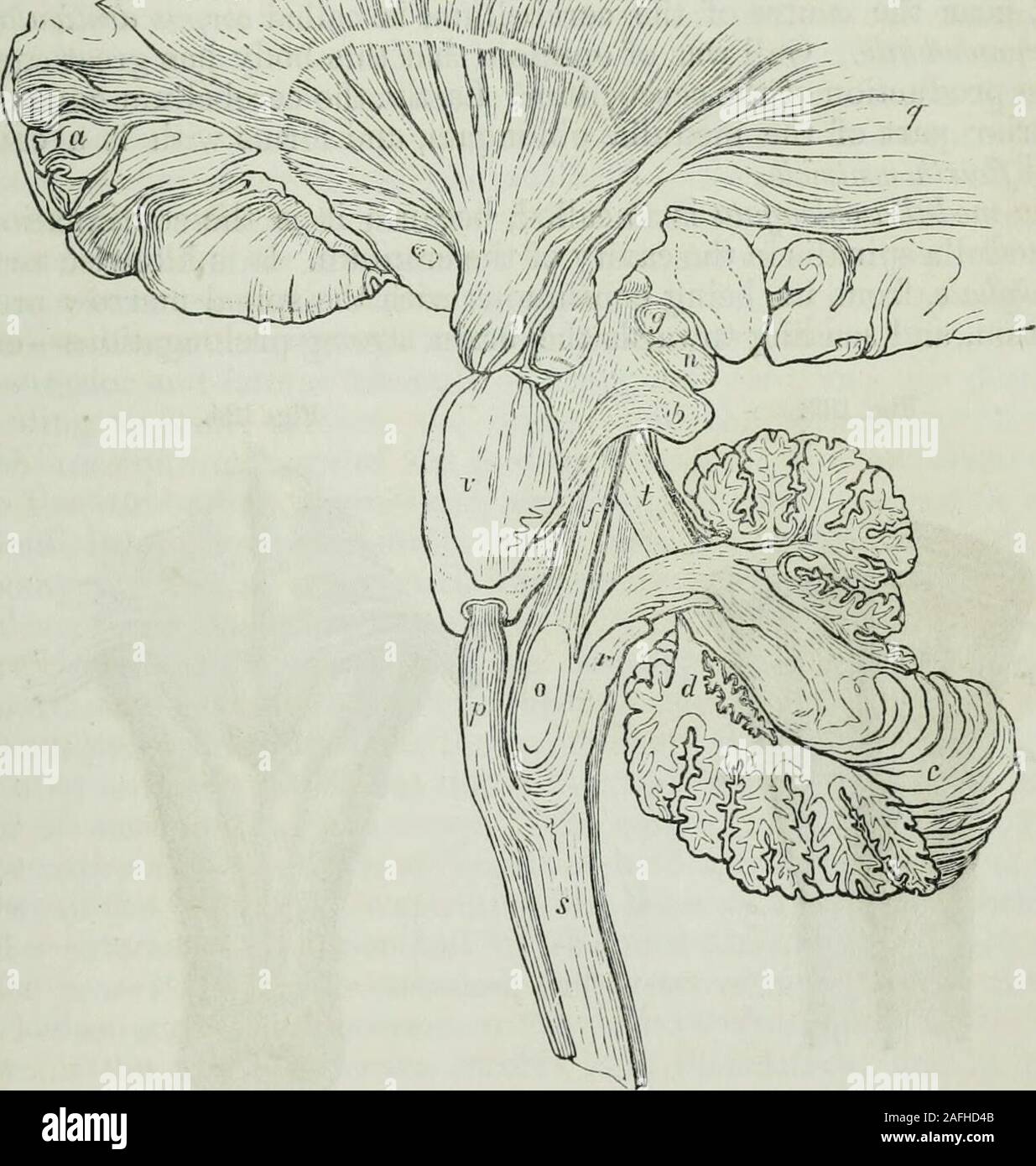. Human physiology. heascending fibres, which pro-ceed from the sensory tractof the medulla spinalis, anddiverge from the thalami op-tici to the periphery of thebrain; secondly, the descend-ing fibres, which convergefrom the periphery towardsthe corpora striata, and thenmedulla spinalis; and, thirdly^a connexion between the va-substance of the brain. The CEREBELLUM. 635 bulk of the human brain, and of that of the higher animals, is greatlydependent upon the large proportion borne by these last fibres to therest.* The cerebellum occupies the lower occipital foss£e, or the whole of thecavity of

Image details
Contributor:
The Reading Room / Alamy Stock PhotoImage ID:
2AFHD4BFile size:
7.2 MB (338.5 KB Compressed download)Releases:
Model - no | Property - noDo I need a release?Dimensions:
1541 x 1622 px | 26.1 x 27.5 cm | 10.3 x 10.8 inches | 150dpiMore information:
This image is a public domain image, which means either that copyright has expired in the image or the copyright holder has waived their copyright. Alamy charges you a fee for access to the high resolution copy of the image.
This image could have imperfections as it’s either historical or reportage.
. Human physiology. heascending fibres, which pro-ceed from the sensory tractof the medulla spinalis, anddiverge from the thalami op-tici to the periphery of thebrain; secondly, the descend-ing fibres, which convergefrom the periphery towardsthe corpora striata, and thenmedulla spinalis; and, thirdly^a connexion between the va-substance of the brain. The CEREBELLUM. 635 bulk of the human brain, and of that of the higher animals, is greatlydependent upon the large proportion borne by these last fibres to therest.* The cerebellum occupies the lower occipital foss£e, or the whole of thecavity of the cranium beneath the tentorium cerebelli. It consists oftwo lateral hemispheres or lobes, composed of a peculiar arrangementof vesicular and tubular substance; and of a central lobe, composed alsoof these substances, and known by the name of the icorm or vermiformprocess. Its size and weight, like those of the brain, differ according tothe individual, and the age of the subject under examination. We do Fig. 192.. Analytical Diagram of the Encephalon—it) a Vertical Section. S. Spinal cord. r. Restiform bodies passing to c, tlie cerebellum, d. Corpus dentatum of the cerebel-lum, o. Olivary body. /. Columns continuous -with the olivary bodies and central part of the medullaoblongata, and ascending to the tubercula quadrigemina and optic thalami. p. Anterior pyramids, v.Pons Varolii, n, h. Tubercula quadrigemina. g. Geniculate body of the optic thalamus, t. Processuscerebelli ad testes, a. Anterior lobe of the brain, q. Posterior lobe of the brain. not observe convolutions in it. It appears rather to consist of laminasin superposition, separated from each other by furrows. We shall see, Carpenter, Human Physiology, p. 215, Lond., 1842. 636 SENSIBILITY. hereafter, that the number of cerebral convolutions has been esteemed, in some respects, to accord with the intellect of the individual; andMalacarne asserts, that he has observed a similar correspondence, asregards the number o